It’s no secret that schools like yours are constantly seeking ways to enhance their engagement and improve their alumni experience. One powerful—and often underutilized—tool schools can use to achieve these goals is the alumni engagement survey. However, while collecting this data is valuable, the true potential lies in its effectiveness.
In this article, we’ll explore how schools can harness the power of alumni engagement survey data to identify relevant trends and apply these insights to enhance alumni relations, foster engagement, and more.
Why Are Alumni Surveys Important?
“Are recent graduates feeling more or less connected than those from decades past?” “How prepared for the workforce do my grads feel?” An effective alumni survey can answer many of these pressing questions.
Alumni engagement surveys provide invaluable insights into how connected and involved former students feel with their alma mater. The data gathered from these surveys can help universities identify strengths and weaknesses in their educational program and form data-driven strategies for improvement.
Alumni surveys should be meticulously designed, covering various aspects such as their academic experiences, career progression, extracurricular involvement, and overall satisfaction with their alma mater. Once you have comprehensive data, you can begin to unlock its potential.
Effective Strategies for Analyzing Alumni Survey Data
After defining the purpose of your engagement survey and designing compelling questions, it’s time to employ practical statistical tools for analyzing and synthesizing this data. These include:
Descriptive Statistics
Descriptive statistics help you understand the essential characteristics of the data. This involves summarizing data in terms of mean, median, mode, standard deviation, and other key metrics. For instance, you can calculate the average satisfaction levels of alumni with their educational experience.
Regression Analysis
Regression analysis is a powerful technique to identify factors correlating with alumni outcomes. You can assess the relationship between variables, such as the impact of class size on alumni career success, to determine which factors significantly influence the results.
Cross-Tabulations
Cross-tabulations allow you to examine how different variables interact. For example, you can cross-tabulate data to understand the correlation between student participation in extracurricular activities and post-graduation employment status.
Data Visualization Tools
Data visualization tools like graphs, charts, and maps can be invaluable when analyzing alumni engagement survey data. They provide visual representations of data trends, allowing you to spot patterns that may be difficult to see in tables or reports. Some effective data visualization strategies include:
- Creating bar, pie, or line charts to compare survey responses over time or across segments. For example, a bar chart showing alumni event attendance rates by graduation year.
- Using heat maps to identify areas or demographics with high or low engagement levels. Heat maps make it easy to see concentrations and outliers.
- Building interactive dashboards with filters to dig deeper into the data. Dashboards allow users to customize views and explore results. Consider using tools like Tableau or Excel to create visually appealing charts that showcase trends and patterns.
- Mapping alumni location data to see participation rates by geographical area. Pin maps make it easy to identify engaged regions.
Are your alumni surveys underperforming? It’s time to revamp your strategy.
Increase Your Response RatesHow to Identify Patterns Through Data Aggregation and Synthesis
Even with plenty of methods to summarize and visualize your data, analyzing alumni surveys involves aggregating results to identify larger trends and patterns. Here are some effective strategies:
- Group survey question responses by demographic factors like age, gender, major, or graduation year. Look for variations across these segments.
- Combine results over time to identify shifts in alumni attitudes, needs, or behaviors.
- Aggregate open-ended comments or feedback using coding or natural language processing to detect themes.
- Synthesize results across survey sections to find relationships between behaviors, interests, and needs.
- Look for correlations between involvement as students and ongoing alumni participation.
- Segment audiences based on behaviors or attributes to target engagement strategies.
- Consolidate data into coherent summaries to separate significant patterns from isolated occurrences.
Applying Survey Insights
The final step in making the most of your alumni engagement survey data is implementing relevant changes that align with your school’s goals and enhance alumni relations.
Improving Alumni Relations
Use your alumni data to shape alumni relations strategies with tactics like:
1. Engagement and Outreach
Alumni surveys can better identify alumni who are willing to actively participate in alumni activities, serve as mentors, or contribute to the institution’s growth. This targeted outreach can foster a sense of community and belonging among alumni.
2. Communication
Understanding how alumni prefer to communicate, the types of content they are interested in, and their preferred channels (email, social media, events, etc.) can significantly enhance communication strategies. Personalized and relevant communication is more likely to resonate with alumni.
3. Fundraising
Alumni survey data can help identify potential major donors or individuals passionate about specific causes within the institution. Schools can tailor fundraising strategies to effectively appeal to these alumni community segments.
4. Monitoring and Evaluation
Effective use of alumni engagement survey data should also involve continuous monitoring and evaluation of the impact of actions taken. Schools should track metrics such as alumni participation rates, donation amounts, and engagement levels. If necessary, strategies and goals should be revised and upgraded.
Education Enhancement
Alumni engagement surveys aren’t just for improving the alumni experience; they also significantly enhance your student experience. Here’s how:
1. Curriculum Development
With the data and insights obtained from survey results, schools can enhance their curriculum by adapting to the changing needs of the job market. Understanding which courses and programs have directly contributed to alumni’s career success helps schools design future offerings that align with these findings.
2. Improving Student Services
Alumni feedback can provide valuable insights into the quality of student services offered. It highlights areas where improvements are needed, such as academic advising, counseling services, or career development programs. By acting on these insights, schools can create a better experience for current students.
3. Quality Assurance
Alumni survey data can serve as a crucial quality assurance tool. It allows schools to monitor and assess their educational programs over time. Any decline in alumni satisfaction or employment rates can be addressed promptly to maintain high academic standards.
4. Promoting Diversity and Inclusion
Incorporating alumni feedback into the creation of more diverse and inclusive environments can lead to a more enriching educational experience for students. Negative feedback around issues like sexual harassment, racism, lack of mental health support, and rising tuition costs signals to administrators that students need more resources in these areas.
By aggregating alumni survey data over time, institutions can track which issues persist and require deeper investments to address. Following up with alumni who provide suggestions can further clarify how to translate feedback into impactful policy changes.
Revamp Your Alumni Engagement Strategy With StageClip
Alumni engagement surveys are not just a data collection method; they are a powerful tool that can shape the future of educational institutions. StageClip is here to help you collect relevant data and extract valuable alumni feedback. Learn more about our alumni surveys, which take mere minutes to complete and help schools get the engagement they need.
Request a sample survey today!
Contact Us Today








